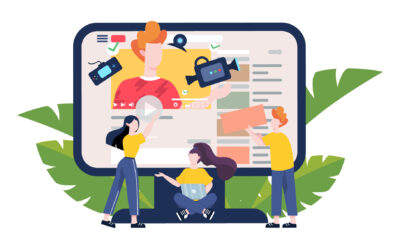“The aim of marketing is to know and understand the customer so well the product or service fits him and sells itself.”
~ Peter Drucker, Management Consultant
By creating personas, you can tailor your content (images and copy/messaging) to match customer needs and tastes. This way, you know exactly who your targeting messaging to.
If you ever find that a message misses the mark, come back to your set personas and make sure that it “fits” to the personas you created.
It’s important to note that personas change over time as the product and world views change. One really good example can be seen with the carmaker Volvo. Volvo touts safety, but they used to really focus on the older buyer by focusing on luxury, as well as using messaging and ads that were targeted to that demographic. As the times have changed, and the Millennial generation is now the largest purchase group, their marketing has shifted to appeal to this group with a “safety and value” message first only tying in luxury. What Volvo researchers most likely found is that Millennials are more apt to spend more to purchase a Volvo because they value safety and quality over simple luxury. Looking nice is great but knowing that they are investing in something that will last forever and keep their family safe, is more important. So, the moral of the story is to revisit your personas throughout the year as the market and need for your product or service shifts.
Keep in mind that each persona should be different. You should not have two personas which are nearly the same. That would mean you only had one audience. Instead, think of each persona as representing a subgroup of people; place your audience into “buckets.”
Get started:
- Determine the customer goal – what do you want your customer to “do” on your website? Then, connect the dots backward to reveal your ideal customer.
- Do some research: Patterns are key here – how can you organize and use insight to group customers together?
- Create the persona (and even give them a name and a photo): Use the worksheet to “build” your target customers.
- Making contact: What scenarios can you come up with where the personas you created will interact with your product/service? Then, either write out or create a flowchart of how the new “person” goes through the scenario to get to the goal you set. What is their motive to interact? Ask yourself that, and jot down the answer.
Example Scenario: Dan is looking to attend a medical school soon, but really wants to make sure he stands out in the interview process. Dan does some Googling to see what he needs to do to prepare. Dan looks for articles that talk about how to do your best at an interview. While he’s on Facebook the next day, Dan sees an ad that talks about interview assistance for medical school applicants. Dan clicks on the ad and is taken to an interview coach’s website. Dan studies the content, sees the reputability of the coach, reads the testimonials from other happy students, and decides to fill out the coach’s contact form.
Resources:
- Persona Word Template Worksheet (below)
- Xtensio user persona template and examples (online persona builder – free and paid versions)
- Hubspot persona generator (online)





0 Comments